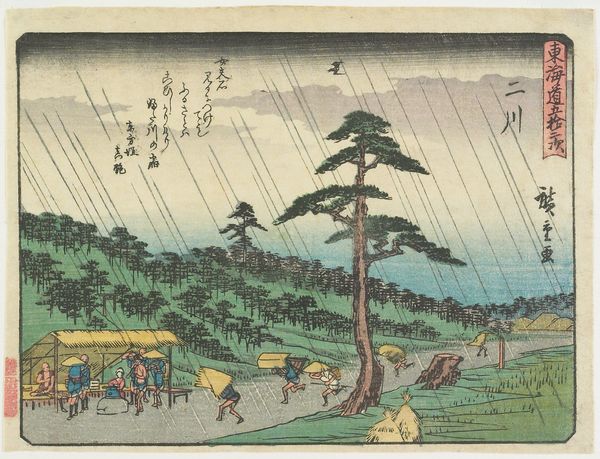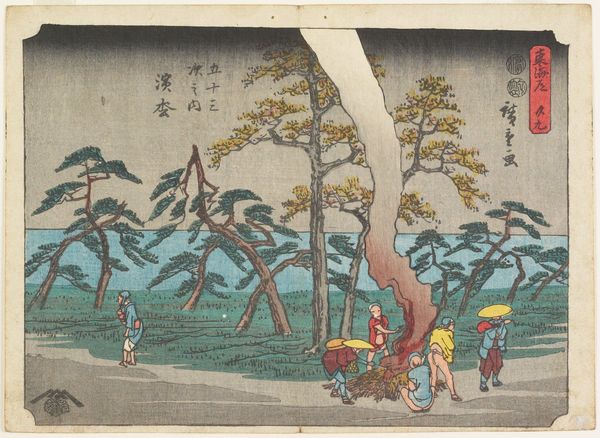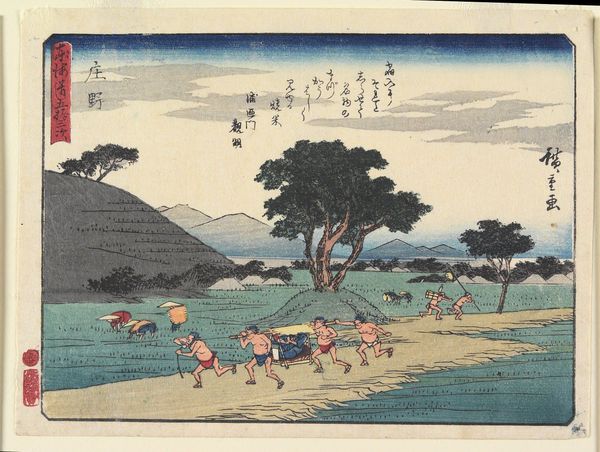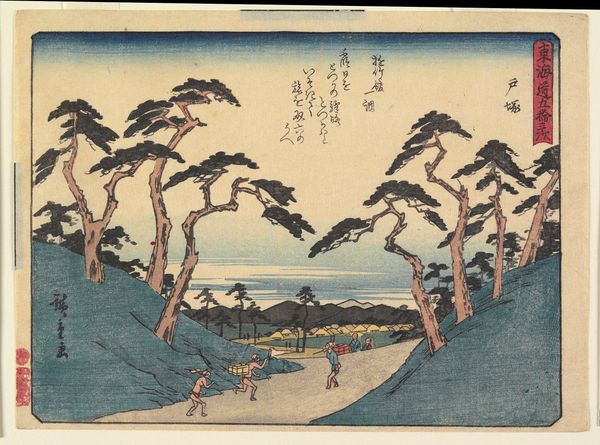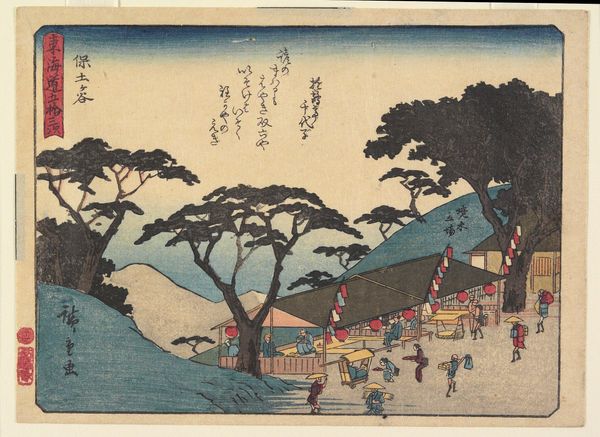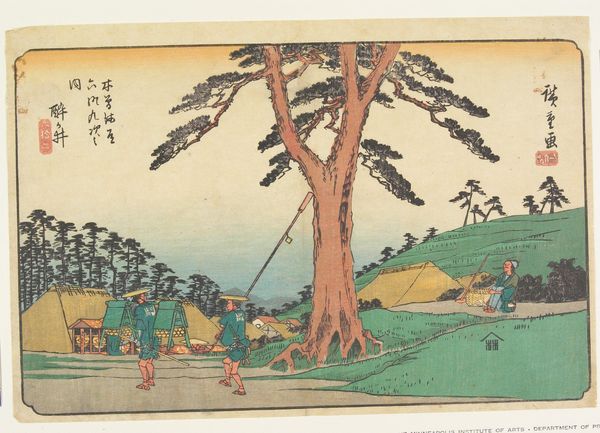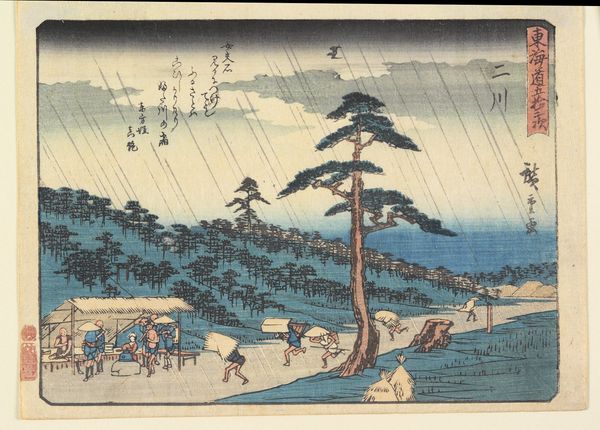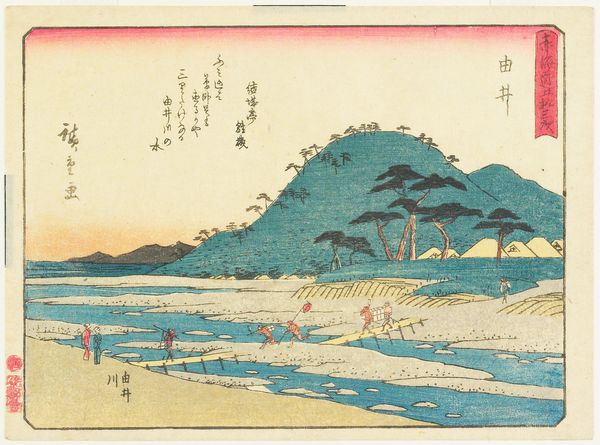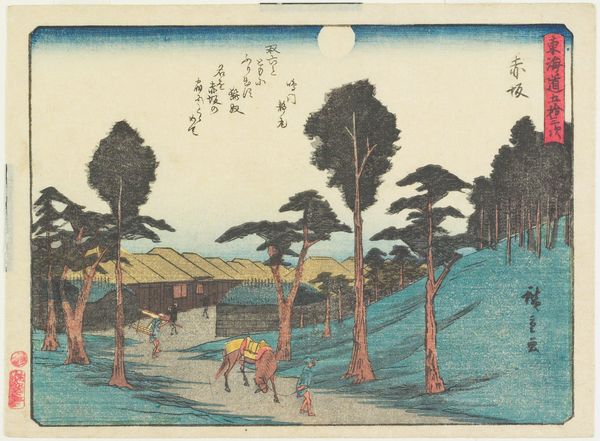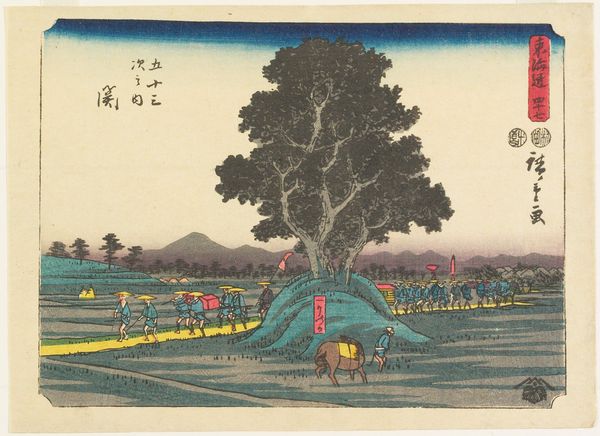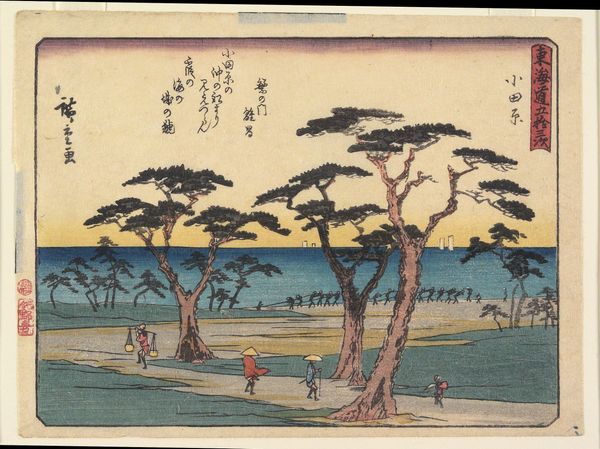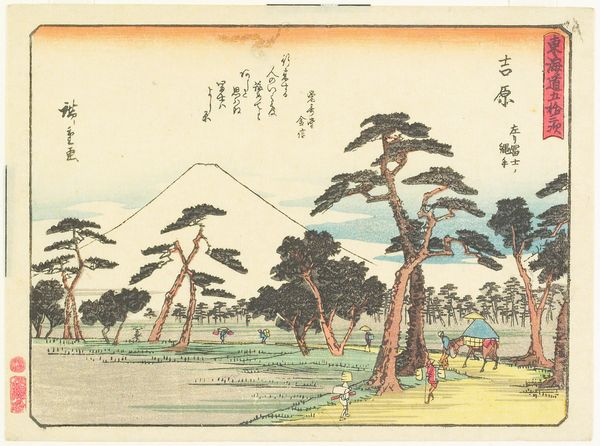
Dimensions: 6 1/16 x 8 1/4 in. (15.4 x 21 cm) (image)6 9/16 x 8 5/8 in. (16.7 x 21.9 cm) (sheet)14 x 17 15/16 in. (35.5 x 45.5 cm) (mat)
Copyright: Public Domain
Curator: Hiroshige's "Futakawa," a woodblock print dating from approximately 1840-1842, now resides at the Minneapolis Institute of Art. It depicts a scene along the Tokaido road. What strikes you initially? Editor: The driving rain, immediately. It's created using these very fine, precise lines that almost obscure everything, and that incredible tall tree offers an anchor, a stark contrast to the diagonal rain. Curator: Rain in Japanese art is not merely meteorological. It symbolizes purification, renewal, even melancholy. Notice how it obscures the figures but doesn't erase them entirely. The figures are bowed against the elements as they continue their journey on the ancient Tokaido Road between Edo and Kyoto, representing the persistent spirit of travel. Editor: Interesting. Structurally, the composition divides roughly into three horizontal bands: the village activity in the foreground, the forested hillside behind, and then that muted sky fading into the distance. It leads the eye from the flurry of movement in the rain to the still permanence of nature. It’s masterful control of depth using minimal components. Curator: The roadside station with its humble gathering embodies the interconnectedness of community within the transient existence of the road. This wasn't just a landscape, it reflected society. Pilgrims, merchants—all sharing momentary shelter. That vivid, primary yellow straw stands for protection against forces—both literal and existential—while adding brightness and highlighting vulnerability. Editor: It's also very cleverly placed to create a focal point within a seemingly chaotic scene. The thatched covering draws our eye immediately. Did this particular location, Futakawa, hold specific significance? Curator: Beyond being a post station, Futakawa resonated because of its location along the Tokaido Road which had cultural and strategic importance, representing social ties that bound the nation together. Through such prints, the emotional geographies of shared experience grew over time as common understanding and imagery. Editor: I see now, examining that bright covering that Hiroshige created not just a snapshot, but a condensation of history, culture, and resilience. Thanks, I now appreciate how deeply that rain goes.
Comments
No comments
Be the first to comment and join the conversation on the ultimate creative platform.
